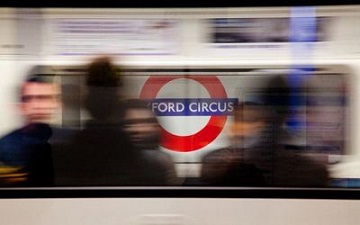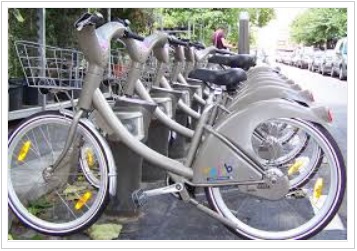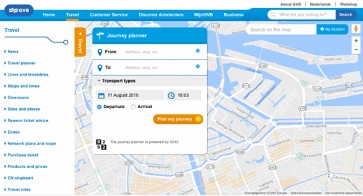 Click HERE to return to the contents page
Click HERE to return to the contents page
 Click HERE to return to the contents page
Click HERE to return to the contents page
Text to Speech and Multimodal Travel
Courtney Lacomblez
August 16, 2016

 Translation from English to Sesotho
Translation from English to Sesotho
ReadSpeaker Link
Speech has come a long way and is now starting to have a major impact in a variety of fields. It is set to play an even greater part in our busy, daily lives as service planners grapple with the complexity of evolving urban landscapes. As multimodal transportation and the sharing economy take on increasingly-defined roles, they will spark the birth of new, exciting services. That said, these innovative technologies can easily overwhelm. But this is where text-to-speech software can really make a difference.

London Underground
Transportation is fundamental in meeting the objectives of economic
competitiveness, social cohesion and sustainable growth.
A European Union study
 estimates that 74% of Europe’s population lives and works in big cities, and by
2050 it is expected that around 82% of the continent’s population will be
concentrated in urban areas, with cities and towns driving the economy,
contributing up to 85% of EU Gross Domestic Product (GDP). Efficient urban
transport is essential for European cities to be competitive as commercial and
economic hubs, and further on a global scale.
estimates that 74% of Europe’s population lives and works in big cities, and by
2050 it is expected that around 82% of the continent’s population will be
concentrated in urban areas, with cities and towns driving the economy,
contributing up to 85% of EU Gross Domestic Product (GDP). Efficient urban
transport is essential for European cities to be competitive as commercial and
economic hubs, and further on a global scale.
An increasing dependence on cars due to unreliable public transport, an aging
population, demands for new and flexible lifestyles: these are just a few of the
critical aspects that service planners are looking at as they research new
transport solutions for more efficient movement of people. In the past few
years, the sharing economy paradigm has brought a new dimension to the
transportation landscape.
Multimodal travel
 has become more multi-faceted and is
part of nearly every traveler’s daily commute. You may drive your car to the
nearest train station, catch a local rail line and then a metro, tram or bus to
reach your destination. Some professionals take a high-speed intercity to work
every day. Car- or bike-share may come into the equation at some point.
Different services and providers, a variety of ways of getting from A to B –
punctually, or with great inconvenience – all in a single day.
has become more multi-faceted and is
part of nearly every traveler’s daily commute. You may drive your car to the
nearest train station, catch a local rail line and then a metro, tram or bus to
reach your destination. Some professionals take a high-speed intercity to work
every day. Car- or bike-share may come into the equation at some point.
Different services and providers, a variety of ways of getting from A to B –
punctually, or with great inconvenience – all in a single day.

Paris’s Shared Bike System, Vélib
For the vast majority of individuals, the key to planning the daily commute is staying informed and we mainly do that using our smartphones. We make plans according to how much we can rely on specific services.
Innovative system developers are starting to cater to a demand in smart mobility
options, but there is still a world of apps and services to create. There’s
debate surrounding the question of whether “urban travel experience” services
lie
in the public or in the private domain
 . Whatever the outcome is, effectively
deployed, real-time multimodal journey planning, updating and ticketing are all
aspects that would greatly enhance everyone’s experience – from travelers,
drivers, fleet operators to network and service managers. New technologies bring
opportunities for integrating data useful for journey planning and electronic
ticketing, and smart cards to facilitate interoperability between public and
private transport modes.
. Whatever the outcome is, effectively
deployed, real-time multimodal journey planning, updating and ticketing are all
aspects that would greatly enhance everyone’s experience – from travelers,
drivers, fleet operators to network and service managers. New technologies bring
opportunities for integrating data useful for journey planning and electronic
ticketing, and smart cards to facilitate interoperability between public and
private transport modes.
And this begs the rhetorical question: Could a great multimodal travel experience be based on anything other than multimodal technology? User opinions indicate that speech is a central element in the multimodal user experience. In all circumstances where deciphering information on screens isn’t ideal or preferred, speech mode for information fruition is essential for the less tech-savvy and anyone with specific accessibility requirements. Integrating lifelike text to speech services for travelers is key. One could consider a public transport information system designed with voice content that is pre-recorded in a studio. But it is more expensive to deploy, and it does not deliver what users need: real-time information on routes, road or track works, unforeseen delays, congestion or any other factors impacting journey times.
By choosing
high quality text-to-speech technology
 , transportation system
providers get the best of both worlds: clear, lifelike voices that instantly
read the very latest information to passengers, who can decide on the best
travel strategy to adopt. As in all contexts, being informed makes for a better
experience.
, transportation system
providers get the best of both worlds: clear, lifelike voices that instantly
read the very latest information to passengers, who can decide on the best
travel strategy to adopt. As in all contexts, being informed makes for a better
experience.
Moreover, in today’s global economy, mobility is multilingual. And when, for example, foreign visitors land at an international airport, it is both courteous and practical to provide information in languages visitors will understand. It’s incredibly easy and cost effective to deploy a world-class, multilingual travel experience by integrating high-quality, multilingual text to speech that provides international travelers with the information they need to reach their destinations safely.

Website of Amsterdam’s Public Transport System, GVB
In all travel and transportation domains – underground or over ground, from platform announcements to on-board information in trains, buses or trams – adding text-to-speech voices is a win-win investment.
Ask ReadSpeaker
 how to deploy human-like text to speech for a satisfying
multimodal user experience in all your urban mobility services.
how to deploy human-like text to speech for a satisfying
multimodal user experience in all your urban mobility services.